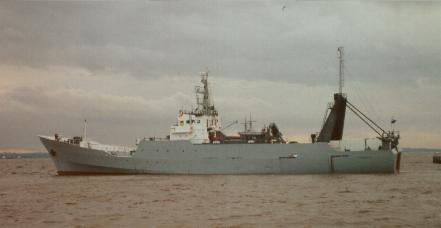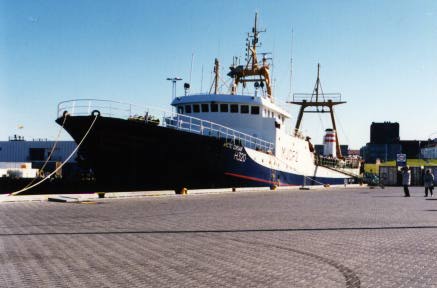| Long Range Maritime Communications in the UK
Early History
|
GKR mainly used 8MHz and 12MHz through each day, with one Radio Officer monitoring each band. In the evening the service dropped to one Radio Officer with 4MHz skeds alternating with skeds on the 1.6MHz service. Where warranted the 6MHz frequency was put into use, although this was rare. All UK trawler traffic was routed to GKR by the telegraph offices at Hull, Grimsby and Fleetwood. Traffic lists were transmitted every two hours in parallel with the MF traffic list on 432kHz. After each traffic list the 8MHz and 12MHz martiime bands were full of British trawlers, all calling GKR to claim their traffic. On each band the GKR Radio Officers scanned for these calling vessels and built up a QRY list (a queue), following which each vessel was worked in turn.
Christmas was a busy time for GKR, with huge numbers of greetings telegrams being transmistted to and from the trawlers. Often there was just too much traffic for the available circuits and additional operational points were set up with the GKR Radio Officers sharing transmitters. Additional transmission frequencies were brought into use at night time by keying transmitters on the MF RT frequencies and listening on 4 or 6 MHz. At the end of the day they always managed to clear the traffic in time for Christmas Day. Laterly, with the demise of the UK distant water fishing fleet, GKR's hf service became more used by merchant ships who found the service a useful, if occasional, alternative to that provided by GKA. |


